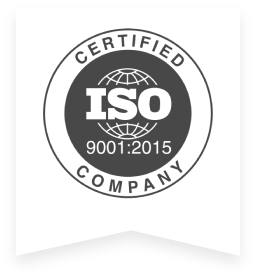DFM Best Practices in Metal Fabrication
Design-for-manufacturing (also called design for manufacturability or “DFM”) is the term given to the art of designing products that are more efficiently manufactured. The concept exists in almost all engineering disciplines, but implementation differs widely depending on the automation and manufacturing technologies employed. As a process, DFM involves designing or engineering a product in order to best facilitate the manufacturing process and the production technologies utilized. DFM has multiple benefits, including reduced costs as well as problem identification and resolution early in the design phase--which is the least expensive place to address challenges. Other factors that may affect manufacturability--such as the type and thickness of raw material, the form of the raw material, dimensional tolerances, and secondary processing such as finishing are all addressed within the approach.
In this article, we’ll explore specific customer benefits that are created in the metal fabrication industry by combining CADD (computer-aided design and drafting) tools, DFM process methodologies, and innovative automation in sheet metal forming and panel bending technology.
Let’s take a look at DFM customer benefits in these areas:
- Unique geometries: design strength vs. gauge strength
- Processing pre-finished and pre-painted materials
- Operational excellence, including:
- Manufacturing velocity
- Accelerated product lead times
- Improved internal-to-cycle times
- Reduced processing operations
How Does Design-for-Manufacturing Create Value?
By combining DFM with innovative manufacturing technology, significant benefits are being delivered today by metal fabrication and stamping companies who have embraced the DFM process and have invested capital in automated punching and automated forming with panel bending technology, and automation in welding with robotic technologies. These benefits translate into more innovative, lower cost/higher value products that can be delivered in smaller lots with greater responsiveness.
Let’s first look at each of the two components: design-for-manufacturing (DFM) and panel bending technology. Then we’ll explore how integration creates significant new opportunities for OEM companies in multiple industries that offer fabricated and stamped metal products or sub-components. The following chart shows the value of DFM as an approach, matched with innovative panel bending technology, and using the Salvagnini P4 panel bender as the manufacturing technology of choice.
It’s easy to understand how the integration of DFM with Salvagnini P4 panel bending technology creates benefits that alone, neither one can deliver. And, Salvagnini panel bending technology offers many more advantages than traditional press brake sheet forming.
Custom Benefits for Design for Manufacturing:
Here is how the customer benefited from the integration of DFM and panel bending:
- Reduced design from nine (9) sub-components pieces into five (5)
- Increased product quality by eliminating 26” of weld and grind
- Reduced manufacturing, material, and labor costs
- Reduced manufacturing cycle time 60%, by reducing 23 processes to 12 processes
- Reduced material content by 11%.
Results: A long-term relationship benefitting both companies—OEM customer and precision product contract manufacturer.
While this customer was in the transportation industry, similar case studies have been demonstrated for customers in other industries, including:
- Renewable Energy
- Technical Products
- Appliances
- Large Vehicle Transportation and Automotive
- Energy
- Electronics and Industrial
- Manufacturing
- Medical Equipment
- Agriculture
What Advantages Do DFM and Innovative Panel Bending Offer?
Dalsin‘s industry leadership is built on value-driven innovation. We hope you’ve found something here that might prompt a re-think about how you are developing and producing your metal fabricated products. Give us a chance to add value to your next product with a free quote!


